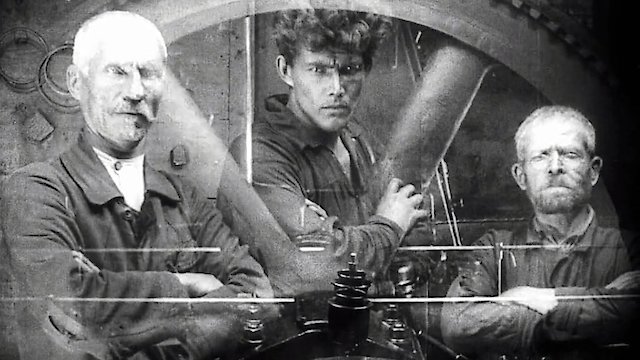
Strike
Where to Watch Strike

Released in 1925, Strike is a silent film directed by the exceptional Sergei Eisenstein, a towering figure in the landscape of Russian cinema. The film boasts a talented cast, including Grigoriy Aleksandrov, Maksim Shtraukh, and Mikhail Gomorov.
Strike is considered an important part of the early days of Soviet cinema and tells a ground-breaking narrative set against the backdrop of struggles between factory workers and the management. It primarily focuses on themes of class conflict, highlighting the debilitating circumstances of the proletariat classes.
Grigoriy Aleksandrov, a prominent actor and later a successful director in his own right, gave one of his career's best performances in Strike. Known for his charisma, Aleksandrov portrays a socialist revolutionary who takes a significant part in leading the factory workers' strikes. He emerges as a luminary figure in this grim tale, championing the cause of the workers and serving as a cohesive force in their bid for justice.
Maksim Shtraukh, an accomplished stage actor with a potent on-screen presence, delivers a compelling performance, particularly in bringing to life the nuances of his character’s steadfast spirit and vanquishing fear. Shtraukh, throughout the film, exhibits an extraordinary range of emotions through his wordless acting, underscoring the vulnerability, resentment, and unyielding determination of the working class.
Known for his interpretive depth, Mikhail Gomorov also shines in his role, providing an instrumental contribution to the narrative with his emotive deliverance. Gomorov’s portrayal communicates the complexities and the adversities faced by his character as the narrative unfolds, adding further substance to the film.
Eisenstein's direction is pervasive throughout, as he uses innovative filmmaking methods to drive the narrative. His pioneering montage theory – a form of cinematic editing – is brilliantly employed in Strike, catalyzing the film's dynamics, intensity, and rhythm. He intentionally juxtaposes numerous varied shots, resulting in emotional and intellectual responses from the audience.
One vital aspect of Strike is its potent emphasis on the divide between the factory workers and the ruling classes. The film effortlessly captures the challenges and injustices faced by the workers because of an oppressive hierarchical structure. Eisenstein's detailed exploration of these themes is conveyed through the visual prowess of the sets, costumes, and the performances of the actors.
In its silent yet hauntingly vocal storytelling, Strike reveals the hard-hitting realities of the early 20th-century industrial era. The film sketches grim reminders of the hardships faced by workers and builds an evocative narrative, driven forward by Eisenstein's masterful direction and the cast's expressive performances.
The cinematography deserves special mention, for the way it captures daily occurrences at the factory with a poetic realism. It uses spectacular close-ups and panoramic shots to provide both an intimate and overarching exploration of workers' lived experiences. The film's stark black-and-white imagery underscores the semblance of despair, struggle, and hope that form the underbelly of this compelling narrative.
Despite being a silent film, the visual narrative of Strike is so strong and influential that it transcends the need for spoken words. The film lets the audience empathize with the workers' plight, takes them through the ordeals faced by the proletariat, and finally leaves them yearning for justice to be served.
The music score, although not a feature of the original film due to its silent nature, has been used to great effect in restored versions. It complements the emotionally charged scenes and enhances the storytelling and the emotional impact it holds on viewers.
All in all, Strike is a cornerstone of early Soviet cinema that frames the contentious issues of worker oppression and the fight against exploitation in a way that remains relevant even a century later. It's a testament to Eisenstein's visionary anchoring and his team's prolific execution that the film continues to resonate in the hearts and minds of cinephiles across the globe, marking an iconic milestone in film history.
Strike is a Drama movie released in 1925. It has a runtime of 89 min. Critics and viewers have rated it mostly positive reviews, with an IMDb score of 7.6..
How to Watch Strike
Where can I stream Strike movie online? Strike is available to watch and stream, buy on demand, download at FlixFling, Amazon, Kanopy, Google Play, YouTube VOD. Some platforms allow you to rent Strike for a limited time or purchase the movie for downloading.
